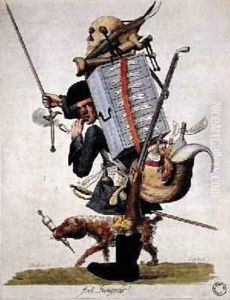Siena Paolo da Paintings
Paolo di Giovanni Fei, known as Paolo da Siena or Paolo di Siena, was an Italian painter of the Sienese School during the Late Middle Ages. He is not to be confused with Paolo di Giovanni Fei, who was also a Sienese painter but from a later period. The exact details of Paolo da Siena's life are somewhat obscure, and there is some confusion surrounding his identity due to the commonality of the name and the lack of extensive records. However, it is generally agreed upon that he was active in the late 13th and early 14th centuries.
Paolo da Siena's work is characterized by the typical features of the Sienese style of the time, which included graceful lines, delicate coloring, and a focus on decorative patterns and religious themes. This style was notably different from the Florentine style, which emphasized more on volume, perspective, and the human form. The Sienese School was more conservative and maintained a more Byzantine influence in its art.
While there are few surviving works confidently attributed to Paolo da Siena, art historians have been able to piece together a sense of his style and influence through the analysis of artworks from the period. His works are considered to be a part of the development of the Sienese School, which would later produce artists like Duccio di Buoninsegna, Simone Martini, and the Lorenzetti brothers.
Due to the limited information on his life and works, Paolo da Siena's contributions to the Sienese School are often overshadowed by these later, more famous painters. Nonetheless, his role in the progression of Sienese art is acknowledged as a part of the rich tapestry of Italian medieval painting. The surviving works that are attributed to him or his workshop help us understand the artistic environment of Siena before it reached its zenith in the 14th century.
Art historians continue to study the few existing records from that time to learn more about Paolo da Siena and to potentially identify more of his works. His death is estimated to have occurred around 1321, and through the ongoing scholarly work, Paolo da Siena's place in art history is slowly being more clearly understood and appreciated.
